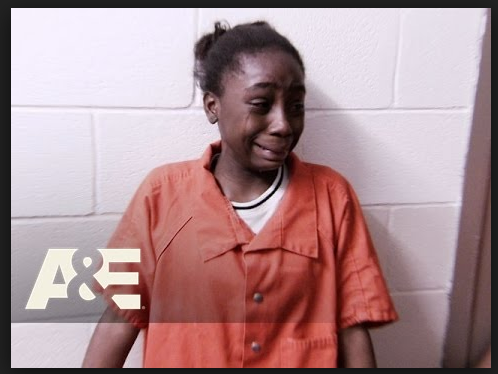By Tasasha Henderson, www.truth-out.org, Guest Contributor for Our Black News
Gynna McMillen was brought into the Lincoln Village Regional Juvenile Detention Center in Elizabethtown, Kentucky, on January 10, 2016, after police were called to her mother’s house about a “domestic incident.” The next morning she was found unresponsive in a cell. What happened to her? Why is she dead after less than 24 hours in the detention facility? These are questions being asked by Gynna’s family and others concerned about the deaths of Black people in police custody.
Slowly, investigators are releasing information, and what we know so far is horrifying. Gynna McMillen, a 16-year-old Black girl, died in a detention center where staff used martial arts to restrain her when she refused to remove her sweatshirt. Gynna McMillen died while isolated in a cell. Gynna McMillen died alone: No one followed the protocol to check on her every 15 minutes.
Violence visited upon the bodies, souls and spirits of Black girls whom society deems “defiant” is all too common.
Black children have always faced disproportionately brutal treatment in jail. “Opportunities Lost: Racial Disparities in Juvenile Justice in Kentucky and Identified Needs for Systems Change,” a 2009 issue brief written and published by Kentucky Youth Advocates, details disproportionate contact with children of color at every level of the juvenile legal system, from complaints against youth to arrest and detainment. Despite representing only 9.5 percent of the Kentucky youth population, African-American youth are more than twice as likely as white youth to have complaints filed against them, four times more likely to be detained during any point in court processing and more than four times as likely to have their cases referred to adult courts.
In 2013, the rate of African-American youth detained in juvenile detention, correctional and/or residential facilities was 495 per 100,000, the highest of any racial or ethnic group, according to National Kids Count data. For African-American girls specifically, the rate was 78 per 100,000, according to the Office of Juvenile Justice and Delinquency Prevention.
While the arrest rate has declined for boys in the juvenile legal system, it has not fallen as sharply for girls. African-American girls represent 33.2 percent of girls who are detained, although they are only 14 percent of the population. Many incarcerated girls have experienced one or more traumas, including abuse, poverty, mental illness and being funneled through child welfare systems. Instead of receiving the help they need, girls are routed into the juvenile legal system because of their victimization. Sometimes, their response to trauma is itself criminalized. As Monique Morris wrote in America’s Wire, African-American girls are often criminalized for qualities associated with survival, such as being loud and defiant.
Violence visited upon the bodies, souls and spirits of Black girls whom society deems “defiant” is all too common. For a Black girl, “defiant behaviors” may include refusing to leave her desk, her presence at a pool party in a white neighborhood or refusing to remove a sweatshirt. When committed by Black girls, these acts are deemed to justify brutality.
Sandra Bland, Raynette Turner, Joyce Curnell, Ralkina Jones, Kindra Chapman, Alexis McGovern, Natasha McKenna and Sheneque Proctor: All were Black women who died while in police custody. Sadly, Gynna McMillen’s name now joins a growing list of Black women dead at the hands of the state.

Be the first to comment on "Why Are Black Girls And Women Dying In Police Custody?"